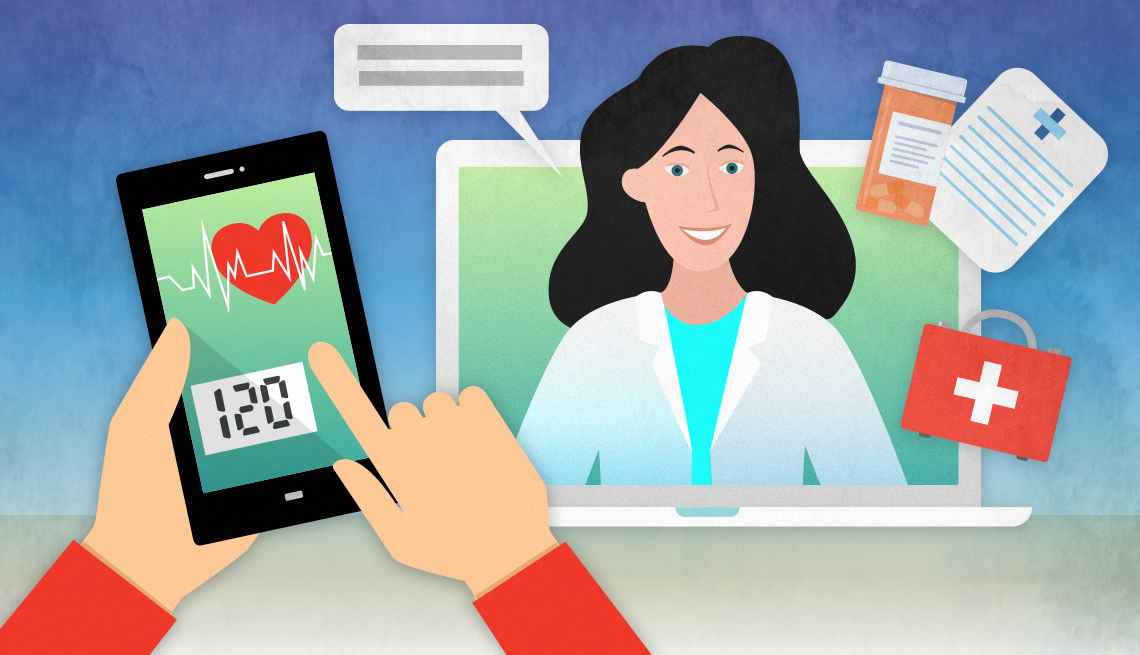
- Select a language for the TTS:
- UK English Female
- UK English Male
- US English Female
- US English Male
- Australian Female
- Australian Male
- Language selected: (auto detect) - EN
Play all audios:
A few days before your appointment, you'll receive a call, email or text from your doctor's office reminding you of your visit. Some medical assistants will ask if you've
tested the audio and video components of your mobile device or computer to make sure they're working. If you're using a computer, you should also test your internet connection. If
you're on a mobile device, make sure the app you use is current. Consider doing a video chat with a family member or friend a few days before your appointment. Alternatively, some
health systems provide a link that lets you test your technology. Zoom and Doxy.me are two examples of videoconferencing services used in telemedicine. In addition, you may need to check in
before your appointment. Your doctor's office may call and ask about your health concern and whether there have been any changes in your medications or allergies. Some health systems
require that you complete an online check-in. If you have a chronic condition like high blood pressure or diabetes, you may be asked to monitor your blood pressure or blood sugar over a few
days and record the readings in MyChart — or bring them to your telemedicine appointment. (Some patients use Bluetooth-enabled blood glucose monitors and blood pressure cuffs, which transmit
the readings to their smartphone and electronic medical record.) If you're having a routine physical, you may need lab work to check your blood counts, cholesterol, blood sugar and,
for men, prostate-specific antigen. Plus, your doctor may ask you to take a picture of something (perhaps a mole or wound) and text it to him or upload it to MyChart before your visit.
Telemedicine providers such as Amwell, Teladoc, and FindCare can help patients find physicians IF YOU NEED TO FIND A DOCTOR OR TELEDOC TO SEE VIRTUALLY If you don't have a primary care
physician, can't get a timely appointment with your doctor or are traveling, consider a provider affiliated with a telemedicine company or retail pharmacy. Companies such as Teladoc,
Amwell and MDLIVE provide telemedicine services to consumers, hospitals and health plans. Their board-certified internists and family-medicine and emergency-medicine physicians diagnose and
treat a host of common ailments, such as sinus infections, pink eye and ankle sprains. These doctors also refill prescriptions, provide patient education and manage chronic conditions, like
diabetes. Psychologists, psychiatrists and clinical social workers affiliated with the companies offer counseling for depression, anxiety and other mental health disorders. To use these
services, you download an app to your smartphone or tablet or visit the company's website and click on a link to set up an appointment. In the case of Amwell, you can select the first
available physician or read about physicians’ backgrounds before making a choice. You're placed in a virtual waiting room, where you're told when the physician will be available.
If the wait is too long, you can switch to a different provider. Patients have the right to request a service they're comfortable with, such as Skype or Zoom. Joseph Kvedar, M.D.,
president of the American Telemedicine Association During a virtual visit, the doctor takes a medical history and asks about your medication allergies and symptoms. Although she is able to
verify your current prescriptions and medication allergies through a third-party service, “patients need to be honest and forthcoming about their health history,” says Mia Finkelston, M.D.,
medical director at Amwell. The doctor may ask to see a rash or check your throat, depending on your symptoms. At the end of a visit, you receive a treatment plan. If necessary, the provider
will recommend that you see your primary care doctor or head to an urgent care facility. “Ninety percent of our patients are able to resolve their medical concerns after a virtual visit,”
says Lewis Levy, M.D., chief medical officer at Teladoc. CVS Health and Walgreens also offer telemedicine services for common illnesses, injuries and skin conditions. CVS Health provides two
types of virtual appointments: E-Clinic visits allow patients to connect virtually with a local MinuteClinic provider (a nurse practitioner or physician assistant), typically between 9 a.m.
and 5 p.m., seven days a week. This service is available in 33 states and Washington, D.C. CVS Health also uses Teladoc's platform to offer video visits, which are available 24 hours a
day, seven days a week. Appointments are scheduled via MinuteClinic.com. Walgreens offers Find Care — a variety of in-person and virtual health care services, including video visits with
physicians through partners such as MDLIVE, Amwell and DermatologistOnCall. When you click on one of the services, you're taken to the company's website. Find Care can be accessed
via walgreens.com/findcare/services or by downloading the retailer's mobile app. The cost of a visit to a provider affiliated with a telemedicine company or retail pharmacy varies. If
you're using a company like Amwell or Teladoc, the fee depends on the service you need and your insurance plan. If you don't have insurance, an urgent care visit for a condition
like the flu or a urinary tract infection may run $80. If a telemedicine company accepts your insurance, you may have a copay similar to an office visit, or, if your employer offers the
service as a benefit, you may pay nothing. CVS Health requires customers to have active medical insurance for a MinuteClinic E-Clinic visit (the retailer accepts most plans). MinuteClinic
Video Visits, on the other hand, cost $60. They're covered by most Aetna insurance plans. Walgreens either lists the price of Find Care services or indicates that “Price varies.” While
these services can help you avoid the emergency room, they may not be right for everyone. “If you're generally healthy and are taking only a few medications, it's reasonable to use
one of these options,” says Ateev Mehrotra, M.D., associate professor of health care policy and medicine at Harvard Medical School. “But if you've seen a lot of specialists and are
taking a lot of medications, it's better to see a doctor in your health system."









